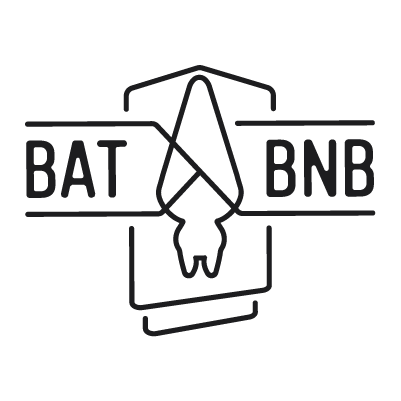What bugs do bats eat?
March 15 2023 – Jessica Woodend
There are over 1400 species of bats, and they specialize in eating many different things: from moths to mosquitoes, to lizards to pollen.
However, 70% of the worlds’ bats are exclusively insect-eaters, and in North America, nearly all of the bat species are insectivores, meaning they eat insects.

LET'S TALK ABOUT WHICH BUGS THESE BATS LIKE TO FEAST ON.
North American bats commonly eat moths, mosquitoes, corn earworm and armyworm moths, green stink bugs, June beetles, cucumber beetles, grasshoppers, crickets and many more.
Corn earworm moths:

Range:
Most of the USA and across Canada
Plants Targeted:
Corn and tomato, most frequently, but they also attack artichoke, asparagus, cabbage, cantaloupe, collard, cowpea, cucumber, eggplant, lettuce, lima bean, melon, okra, pea, pepper, potato, pumpkin, snap bean, spinach, squash, sweet potato, and watermelon
Damage estimate:
$100 million worth of damage to crops annually, plus an estimated additional $250 million is spent every year on pesticides to try to combat these earworm moths.
Description:
Corn earworm moths are considered by some to be the most costly crop pest in North America. Not only do the larvae feast on the harvestable part of the plant, but their feeding also encourages fungal pathogens to grow on the plant (Entomology, UF| IFAS).
The estimated annual cost of the damage is more than US$100 million, plus we spend an estimated additional $250 million a year on pesticides to try to combat these earworm moths. (Capinera J (2001). Handbook of vegetable pests. Elsevier.)
Insect-eating bats, such as the North American eastern red bat (Lasiurus borealis), commonly forage on adult moths of crop pests, including the corn earworm.
Insect-eating bats are estimated to be worth US$ 1 billion a year to maize farmers around the world (Maine, J.J. and Boyles, J.G. (2015) Bats initiate vital agroecological interactions in corn. Proceedings of the National Academy of Sciences. 112(40): 12438–12443. DOI:10.1073/pnas.150541 3112)
Image: Melissa McMasters
Armyworm moths:

Its scientific name derives from the Latin word, frugiperda, which literally means lost fruit.
They target crops including cotton, tobacco, sweet corn, rice, peanuts, wheat, oat, sugar cane, and even fruits such as apples, oranges, strawberries, and many more.(Source) It is estimated that almost 40 percent of the plant species that armyworms target are economically important. Because the larvae eat so much of the plant, they are very detrimental to crop survival and yield.
Ashley, T. R. (1979). "Classification and Distribution of Fall Armyworm Parasites". The Florida Entomologist. 62(2): 114–123. doi:10.2307/3494087. JSTOR 3494087.
Bats are common predators of the armyworm moth and many other agricultural pests. (Source)
Japanese beetles:

This invasive beetle from Japan is a known d pest of about 300 species of plants including rose bushes, grapes, blueberries, raspberries, apples, hops, asparagus, maize, canna, crape myrtles, birch, maple, and linden trees, and others. Source: https://planthealthportal.defra.gov.uk/assets/factsheets/popillia-japonica-factsheet.pdf
Adult beetles damage plants by skeletonizing the foliage, that is, consuming only the leaf material between the veins. The adult beetles will also consume the plants’ fruit, while the larvae feed underground on the roots of the plants. (Source: http://www.perennialpals.com/b/wp-content/uploads/2014/05/UKJapaneseBeetle.pdf)
Cucumber beetles:

Suitably named because they eat crops like cucumbers, melons, cantaloupe, squash, etc. They damage foliage and the fruit. Additionally, striped cucumber beetles can transmit the bacterial wilt pathogen that frequently kills the crops.
(Source: https://extension.umn.edu/yard-and-garden-insects/cucumber-beetles)
In one summer an average maternity colony of 150 bats can easily eat 38,000 cucumber beetles, 16,000 June bugs, 19,000 stinkbugs, and 50,000 leafhoppers. These estimates are very conservative and do not include the many other insects eaten. (Source: https://www.batcon.org/article/bats-beetles-and-bugs/)
Potato bugs:

These are the most serious insect pest of potatoes. They feed on potato leaves & their damage can greatly reduce yield and even kill plants. In addition to potato, Colorado potato beetle can be a serious pest of tomato, eggplant, and pepper. (https://entomology.ca.uky.edu/ef312)
In 1994, total costs of the insecticide and crop losses in the US state of Michigan were $13.3 million, representing 13.7% of the total value of the crop. The estimate of the cost implication of insecticides and crop losses per hectare is $138–368. Long-term increased cost to the Michigan potato industry caused by insecticide resistance in Colorado potato beetle was estimated at $0.9 to $1.4 million each year.[39]
(Source: Grafius, E. (1997). "Economic Impact of Insecticide Resistance in the Colorado Potato Beetle (Coleoptera: Chrysomelidae) on the Michigan Potato Industry". Journal of Economic Entomology. 90 (5): 1144–1151. doi:10.1093/jee/90.5.1144.
Bats are frequent predators of potato bugs. Piles of potato bug elytra (the shiny hard part of their wings) are often found inside bat-inhabited caves.
Image: Adamozphoto
Green stink bugs:

The green stink bug, Chinavia halaris (Say), is a commonly encountered pest of seeds, grain, nuts and fruit in both the nymph and adult stages across North America. This species is highly polyphagous (has many host plants) which it damages through feeding. Feed on the seeds of tomato, apple, apricot, asparagus, beans, cherries, corn, cotton, eggplant, peach, pear, peas, soybean, and tobacco.
(source: https://entnemdept.ufl.edu/creatures/veg/bean/green_stink_bug.htm)
When no seeds are present, they also feed on stems and foliage, thus damaging several fruit trees, such as the apple, cherry, orange and peach trees.
Image: Melissa McMasters
Mosquitoes:

A single little brown bat can consume up to 1000 mosquito sized insects in a night.
Traditional pest control solutions involve spraying deadly pesticides on our food, which poisons birds and other wildlife, and is correlated with human infant mortality.
These bats have been providing a natural solution all along.
By eating these bugs, bats save the US Agricultural industry an estimated $23 BILLION/year by reducing the need for pesticides.
And that’s when bats are at very reduced numbers. Imagine how much more they could help us if we helped them.
Put up a bat house on your property
The USGS estimates that, the loss of the one million bats in the Northeast has probably resulted in between 660 and 1320 metric tons of insects no longer being eaten each year by bats. (https://www.usgs.gov/faqs/what-do-bats-eat?qt-news_science_products=0#qt-news_science_products)
Additionally, bats typically avoid bugs such as bees or butterflies due to scheduling conflicts; because they sleep during the day when these insects are most active.
Putting up a bat house is a great way to encourage these insect-eaters to remove the pests from your garden and neighborhood.
Learn more about bats visiting BatBnB’s Bat Education Zone.
By: Emily Stanford


0 comments